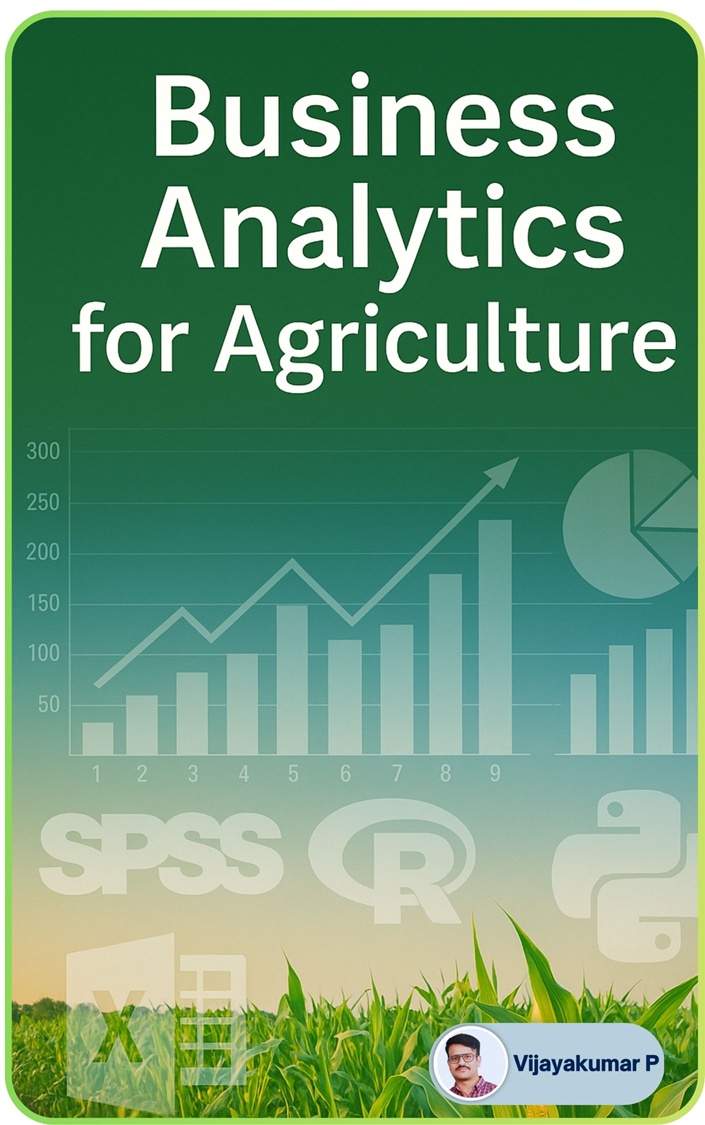Code
sample R code
x=5
y=3
x+y[1] 8Vijayakumar P
Apr 10, 2025

Business Analytics for Agriculture equips students with the theoretical foundations and practical skills to apply data science in agribusiness. The course integrates principles of data science, statistical methods, and machine learning with agricultural case studies, preparing students to analyze and solve sector-specific challenges. It begins with an overview of data science, highlighting algorithms, big data, AI, and business analytics in agriculture. Students gain hands-on experience in research methods, data preparation, and visualization using both R and Python, applying statistical techniques such as t-tests, ANOVA, and Chi-square. The course further introduces machine learning and deep learning approaches, including regression models, clustering, decision trees, and neural networks, with applications in forecasting, precision farming, and IoT-driven solutions. Practical sessions emphasize descriptive, predictive, and prescriptive analytics through case studies using R, Python, Excel, and SPSS, enabling students to translate data into insights for improved agricultural productivity, profitability, and sustainability.

Vijayakumar P is an accomplished educator and data professional with over eight years of teaching and research experience in business analytics, data science, and HR analytics. He is a UGC Junior Research Fellow (JRF) and has qualified the UGC NET and SET in Management multiple times, reflecting his strong academic foundation.
Proficient in Python, R, STATA, SPSS, AMOS, PLS-SEM, Tableau, Power BI, Google Looker Studio, GitHub, and Excel , he has guided students and professionals in transforming data into actionable insights. His teaching spans business analytics using R and Python, HR metrics and dashboards, business forecasting, and business research methods, and he has also developed interactive eBooks to enhance hands-on learning.
Vijayakumar’s work is marked by clarity, precision, and innovation—whether in research, classroom teaching, or applied analytics—making data more accessible, impactful, and meaningful for decision-making.
Throughout the book, the codes used for the analysis are included in this document as shown below. And the output of each code is given below the code.
sample R code
x=5
y=3
x+y[1] 8